2020. Undeniably the year where wellness, self-care and an eco-conscious outlook take centre stage for us human beings. An integral part of all this is of course nature – and our connection to it – and more specifically, indoor plants. We’ve seen a huge resurgence in the popularity of plants in interiors over the past few years and there’s no sign of this abating as more and more people realise the undeniable health and wellness benefits of bringing more plants into our lives. We’ve rounded up our top ten indoor plant picks for the year and before you ask, you won’t find any rare or obscure specimens here, our list includes those you’ll see popping up with increasing frequency in residential and commercial spaces – and for good reason!
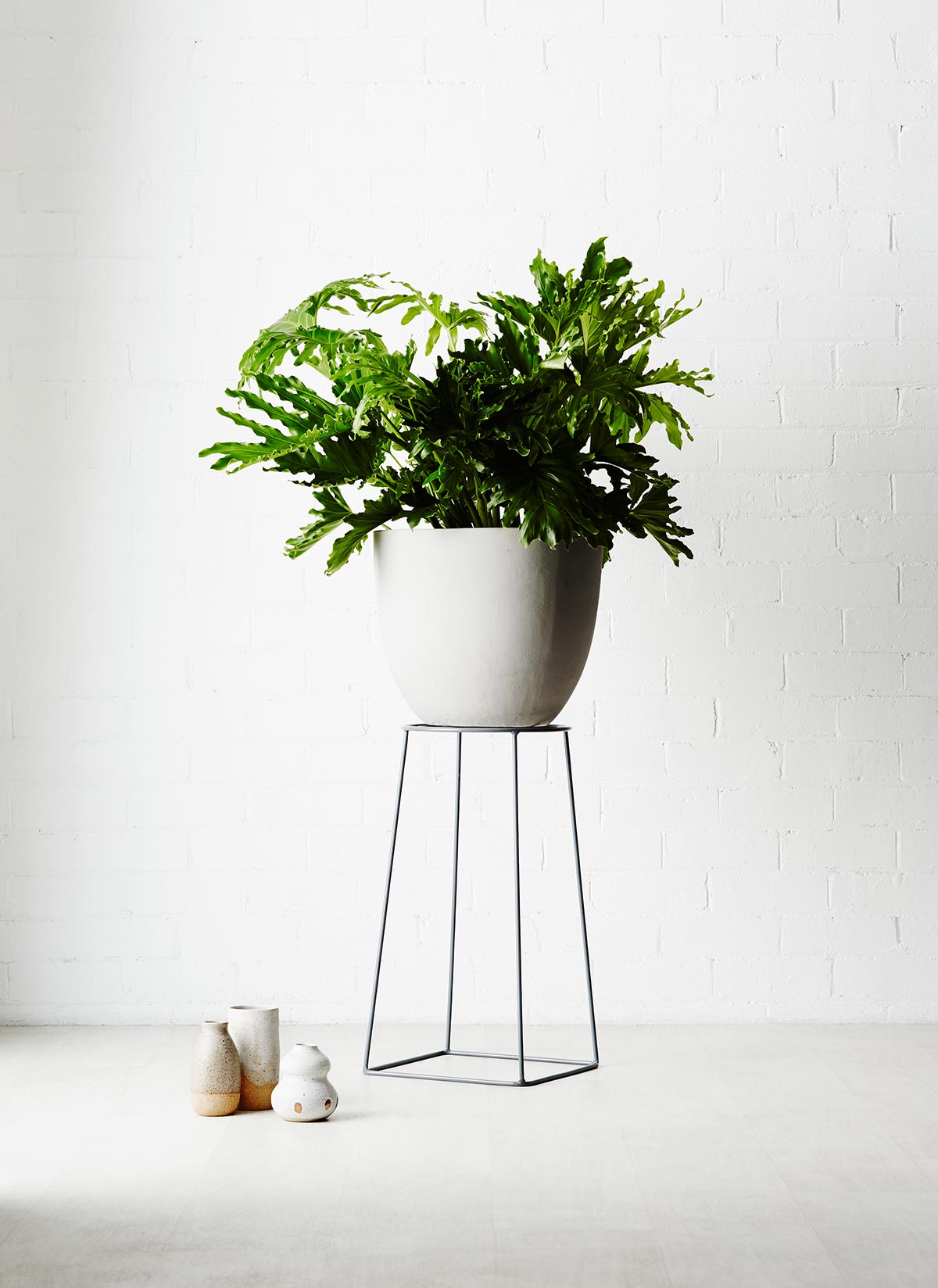
1. Philodendron Hope
Taking its cue straight out of the 70’s, the philodendron hope’s large lobed leaves create a striking organic silhouette – no two plants are ever the same! Pairs well with low bushy plants like peace lily and work well to create impact.
Light: Medium or bright indirect. Doesn’t do well in low light, nor direct sun.
Water: Moderately, allowing the top 3cm of soil to dry out between waterings – in winter, allow the mix to almost entirely dry out.
Care Tip: Rotate the plant regularly as the long stems will grow towards sunlight.
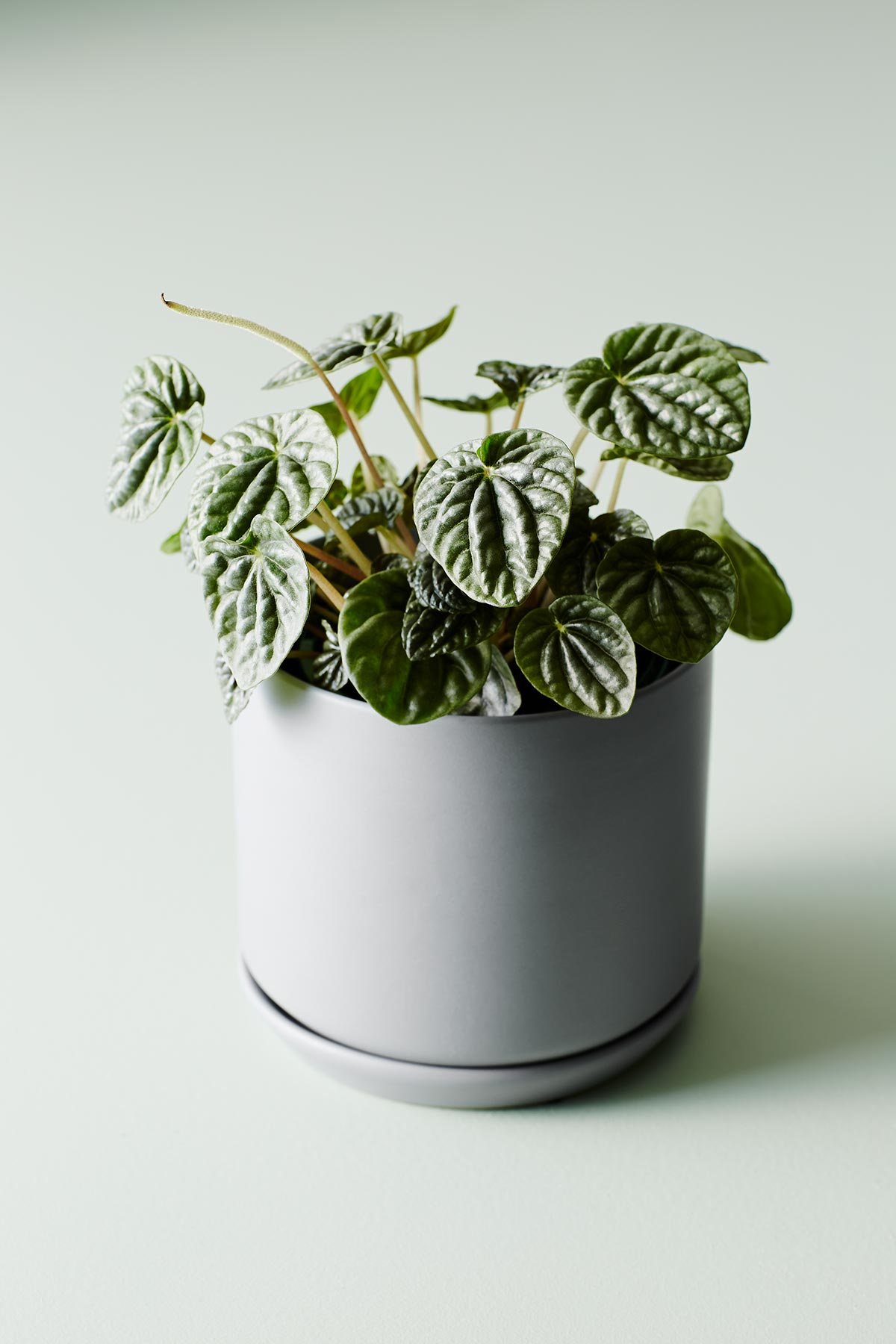
2. Peperomia
There’s a huge array of peperomia, sometimes known as ‘radiator plants’. They’re often compact in size, with bushy shape and have a variety of different leaves, some also have flowering stems – rarely recognised as flowers as they’re long and narrow! Great for novice plant parents and for use in commercial spaces due to their hardy, low maintenance nature.
Light: Can tolerate a little direct sun or low light, but bright indirect light is preferable.
Water: Moderately, allowing the top 3cm of soil to dry out between waterings – in winter, allow the mix to almost entirely dry out.
Care Tip: You can pinch the long stem flowers off if you’re not a fan.
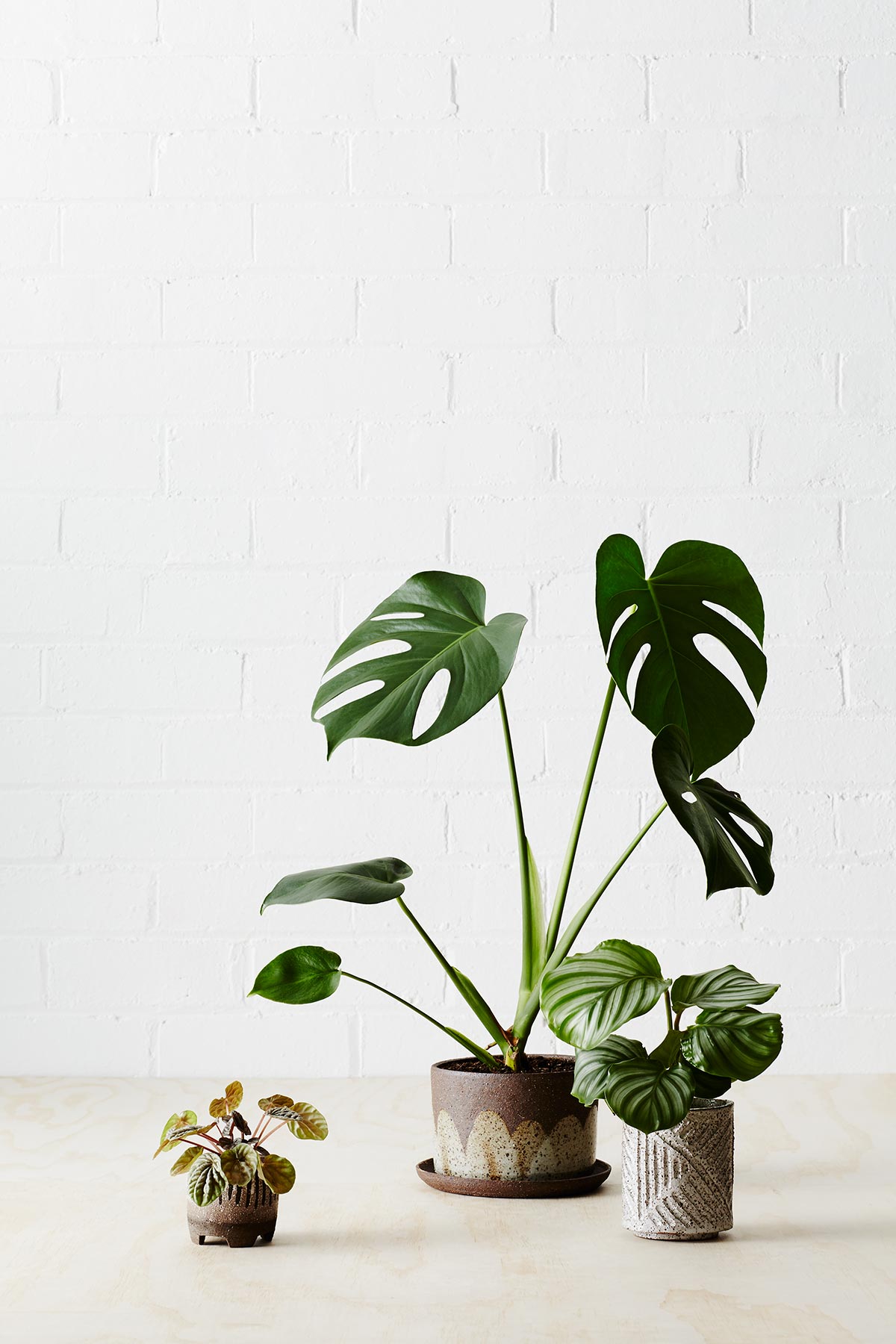
3. Monstera (centre, photo above)
This popular plant has shot to fame in recent times with its eye-catching silhouette and graphic form. Paired with its low maintenance vibe and ability to thrive without the need for direct sunlight, the ‘Fruit Salad Plant’ as its affectionately known is a mainstay in our top ten list.
Light: Bright, filtered sunlight, no direct sun.
Water: Moderately, allowing the top 3cm of soil to dry out between waterings – in winter, allow the mix to almost entirely dry out.
Care Tip: Wipe its leaves regularly to prevent dust building up.
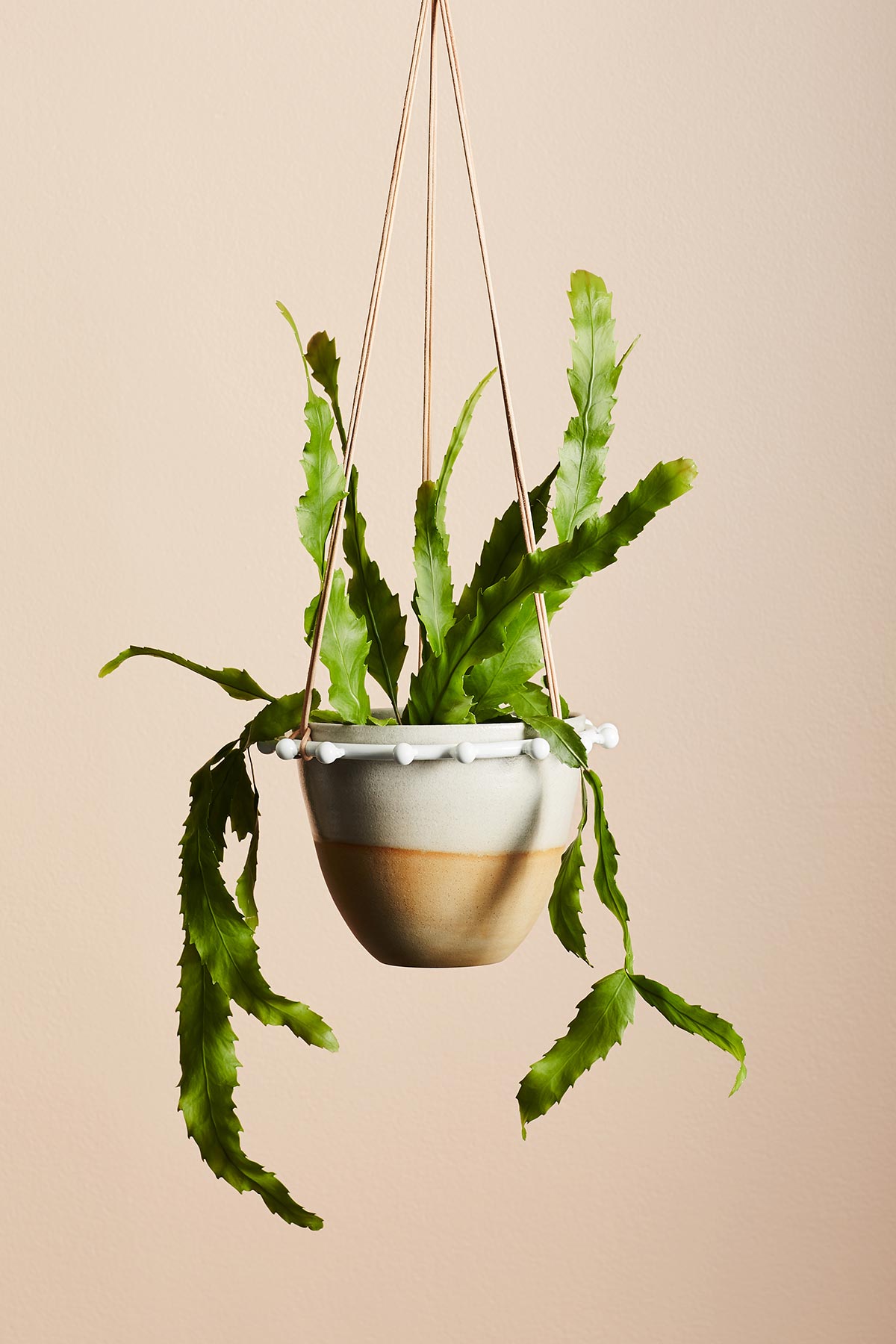
4. Rhipsalis
Rhipsalis is a large genus of flowering plants in the cactus family, sometimes referred to as ‘mistletoe cacti’. Their appearance can vary wildly; from fluffy flowers and thin spaghetti-type leaves to fuller, flatter leaves. Their eye-catching sculptural form and ability to survive in harsh conditions makes them a great choice when it comes to indoor plants.
Light: Can handle full sun – some can even tolerate low light.
Water: Moderately, allowing the top 3cm of soil to dry out between waterings – in winter, allow the mix to almost entirely dry out. They can handle extended periods of no water.
Care Tip: You can propagate the stems and replant to create more fullness at the soil level.
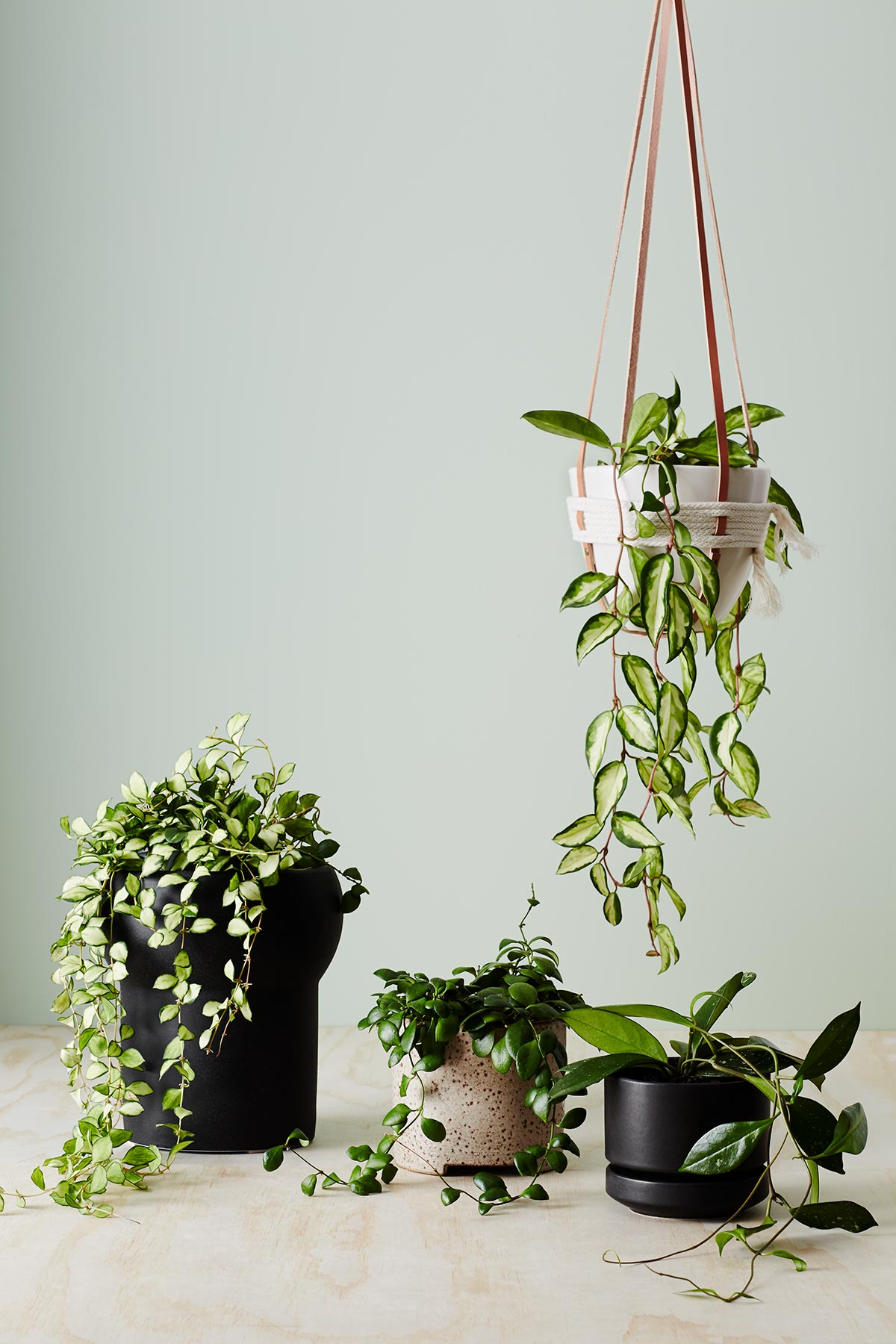
5. Hoya
There are nearly 200 species of hoya, sometimes known as ‘wax flowers’. Originally from tropical Asia and Australasia, these woody-stemmed vines have delicate porcelain-like flowers (that almost look fake they’re so perfect!) and lustrous evergreen foliage.
Light: Three to four hours of direct sunlight every day for healthy growth and flowering.
Water: Keep moist in warmer months and drier in winter.
Care Tip: They thrive in warmer conditions and can be trained to climb or trail.
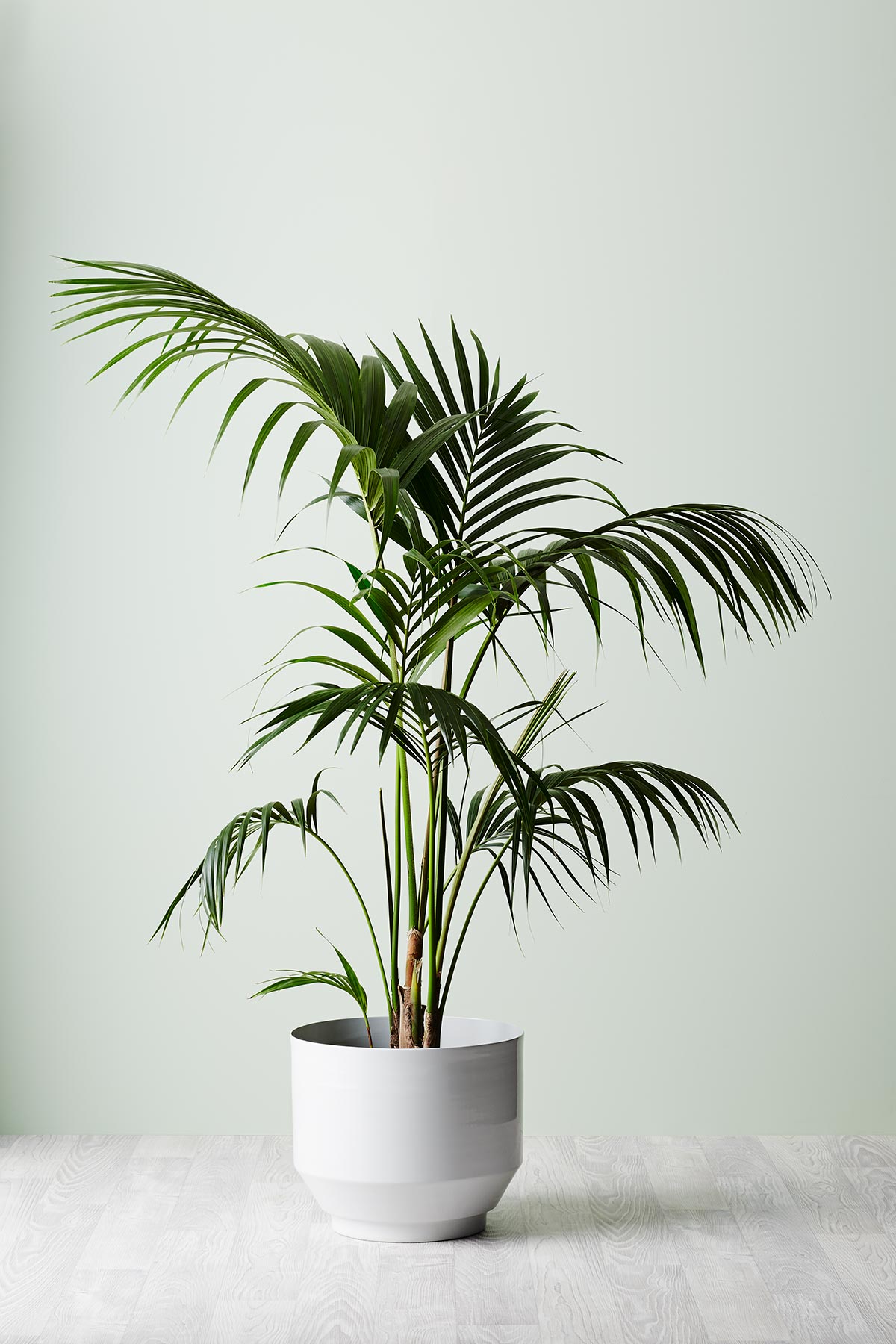
6. Kentia Palm
A classic since the 70’s,, kentia palms have always been a mainstay on the indoor plant scene. Their beautiful large fronds have the ability to create a dramatic wide-reaching (and tall!) scene in an interior and their easy-going nature makes care for them simple.
Light: Can tolerate low light but prefers bright indirect for best growth.
Water: Moderately, allowing the top 3cm of soil to dry out between waterings.
Care Tip: Dust the leaves regularly to ensure sunlight can penetrate.
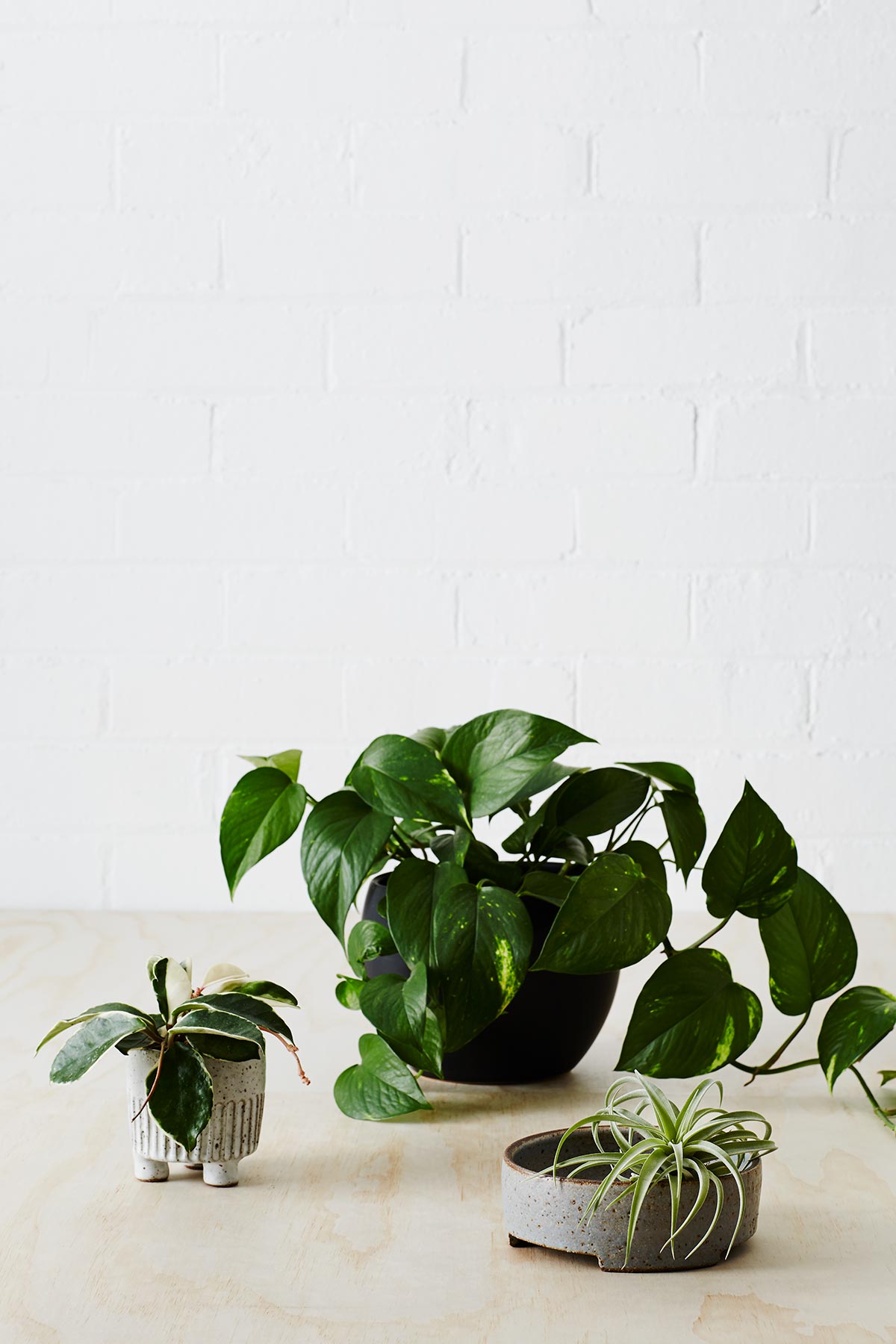
7. Devil’s Ivy (centre of photo)
Devil’s Ivy is often found in trending plant lists – and for good reason! It’s a hardy specimen with floaty, romantic tendrils that can be trained vertically or horizontally. It’s low maintenance needs make it a very popular choice in commercial spaces; you’ll often see it in cafes and offices.
Light: Can tolerate low but will thrive in medium to indirect bright.
Water: Moderately, allowing the top 3cm of soil to dry out between waterings – in winter, allow the mix to almost entirely dry out.
Care Tip: Remove any yellowing leaves to keep the plant’s energy focused on growth.
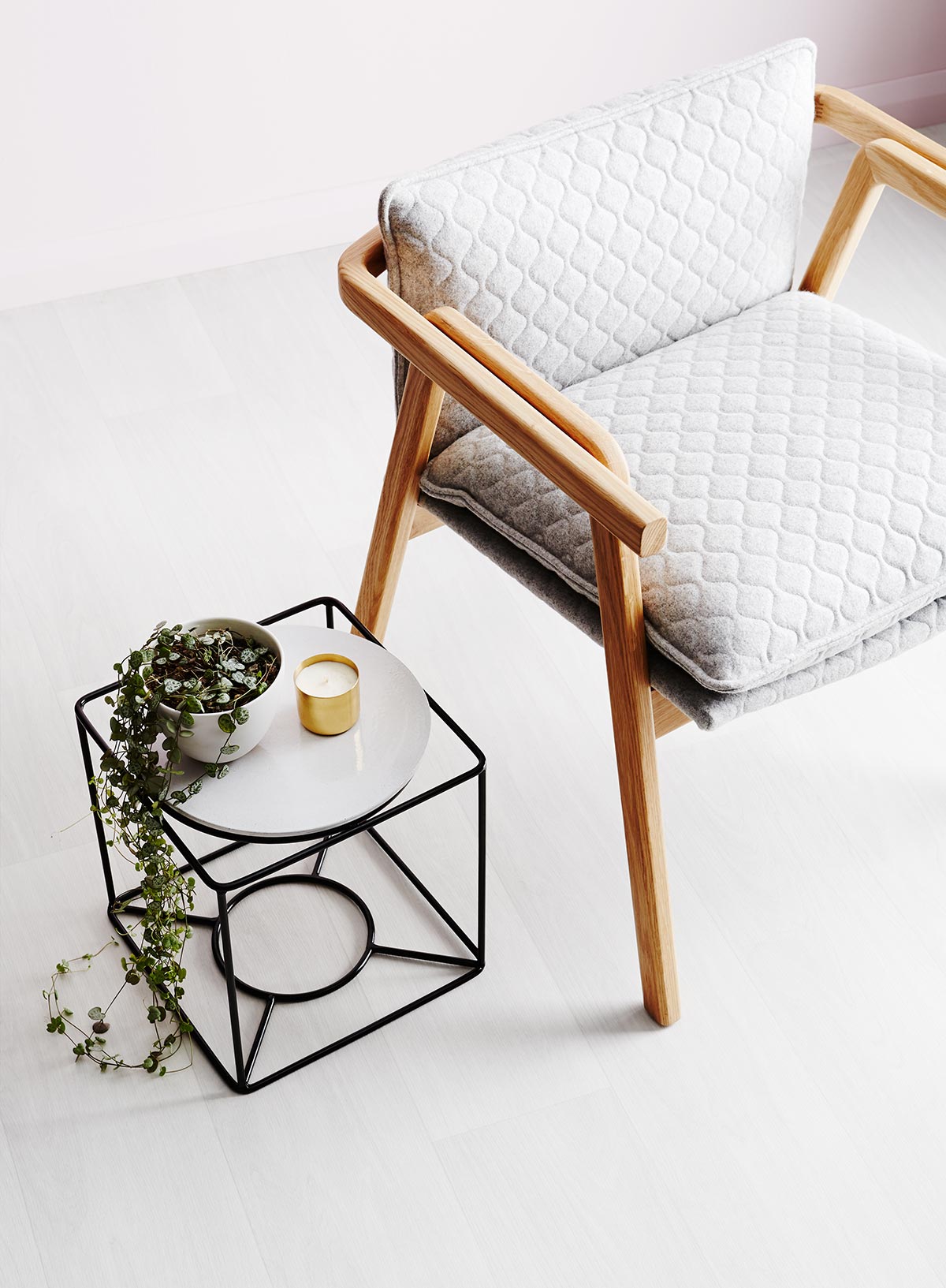
8. Chain of Hearts
A popular plant that can often be hard to track down (but always worth it when you find one!), chain of hearts showcases delicate tendrils with small, heart-like leaves. Best displayed trailing down shelves or the like, where its beautiful form can be appreciated.
Light: Filtered to bright light, can tolerate periods of direct sunlight.
Water: Water sparingly, allowing the soil to almost dry out between waterings.
Care Tip: Propagate your plant by removing the tubers (small potato-like balls) and press the tuber into the soil – this is a great way to thicken up your plant at the soil.
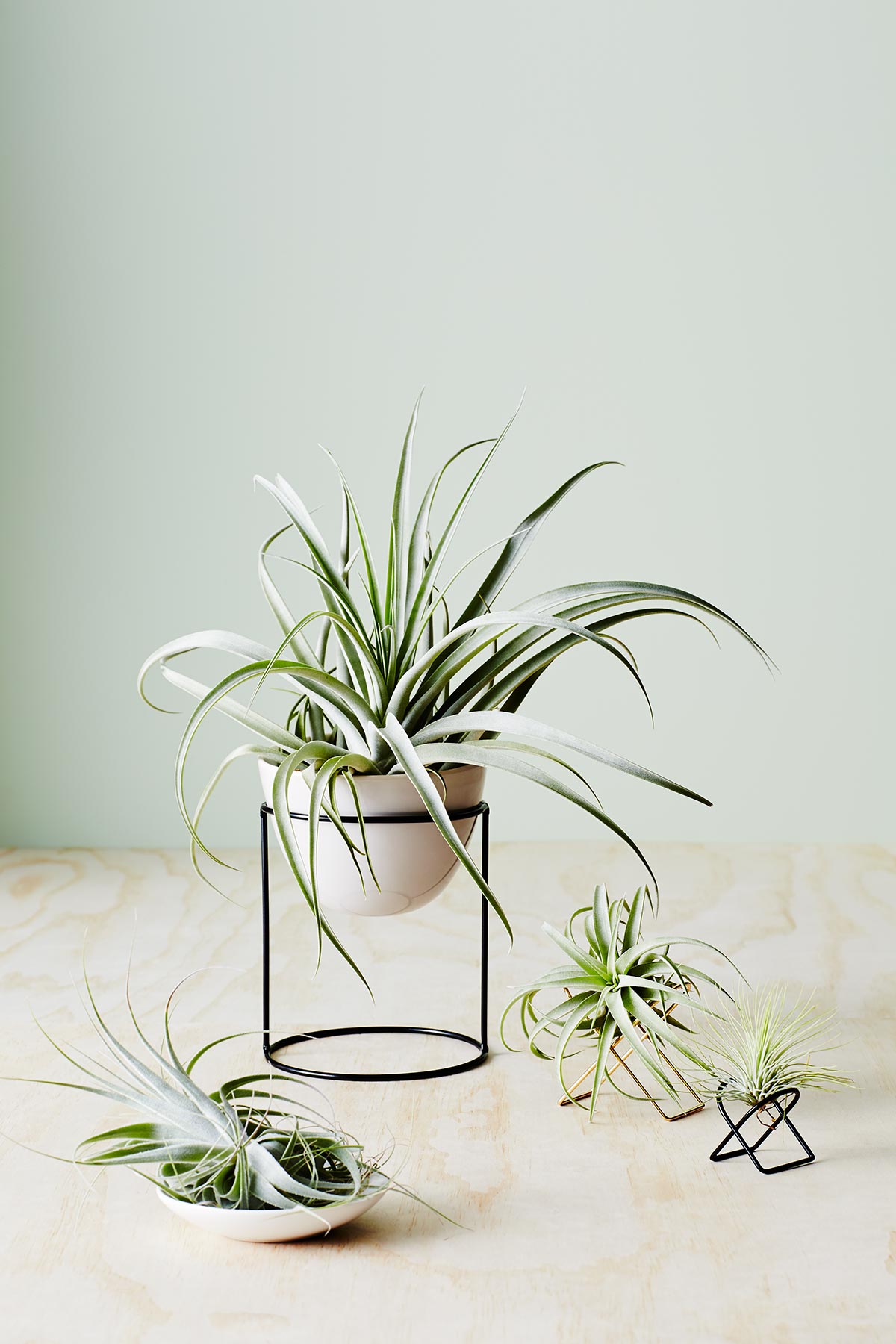
9. Tillandsia (Air Plants)
As their name suggests, air plants – widely varying forms of bromeliad, also known as tillandsia – don’t need soil to grow. In the wild, they attach themselves to other plants. They absorb moisture and nutrients through their leaves so they do still need to be watered, but they certainly aren’t as needy as a lot of other plants.
Light: Bright filtered light is best but no direct sun as they’ll scorch.
Water: Mist spray two or three times a week. Spanish moss can be submerged in water for ten minutes once a week.
Care Tip: Group them together for impact; they look great bundled in a low bowl.
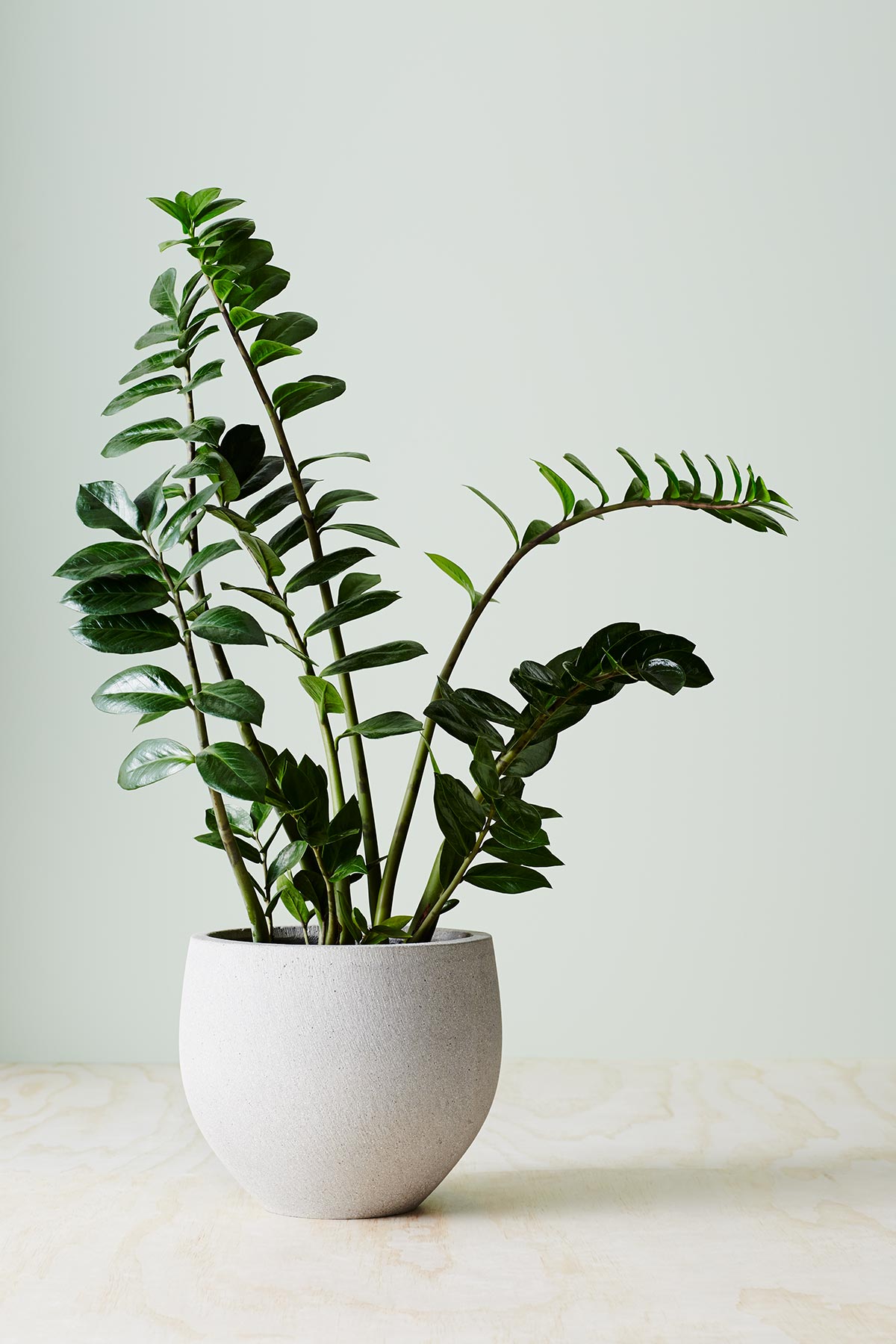
10. Zanzibar Gem
Plants are being used as a non-negotiable in building design these days, and because of this we’ll see an increase in the popularity of hardy specimens like zanzibar gem. Commonly known as ‘the plant that thrives on neglect’, it’s a great go-to option due to its tolerant and easy-going nature.
Light: Medium to filtered; Can tolerate shady conditions but thrives in indirect light.
Water: Sparingly, allow the soil mix to almost completely dry out between waterings.
Care Tip: Don’t over-water! Sometimes water just once per month will be enough.
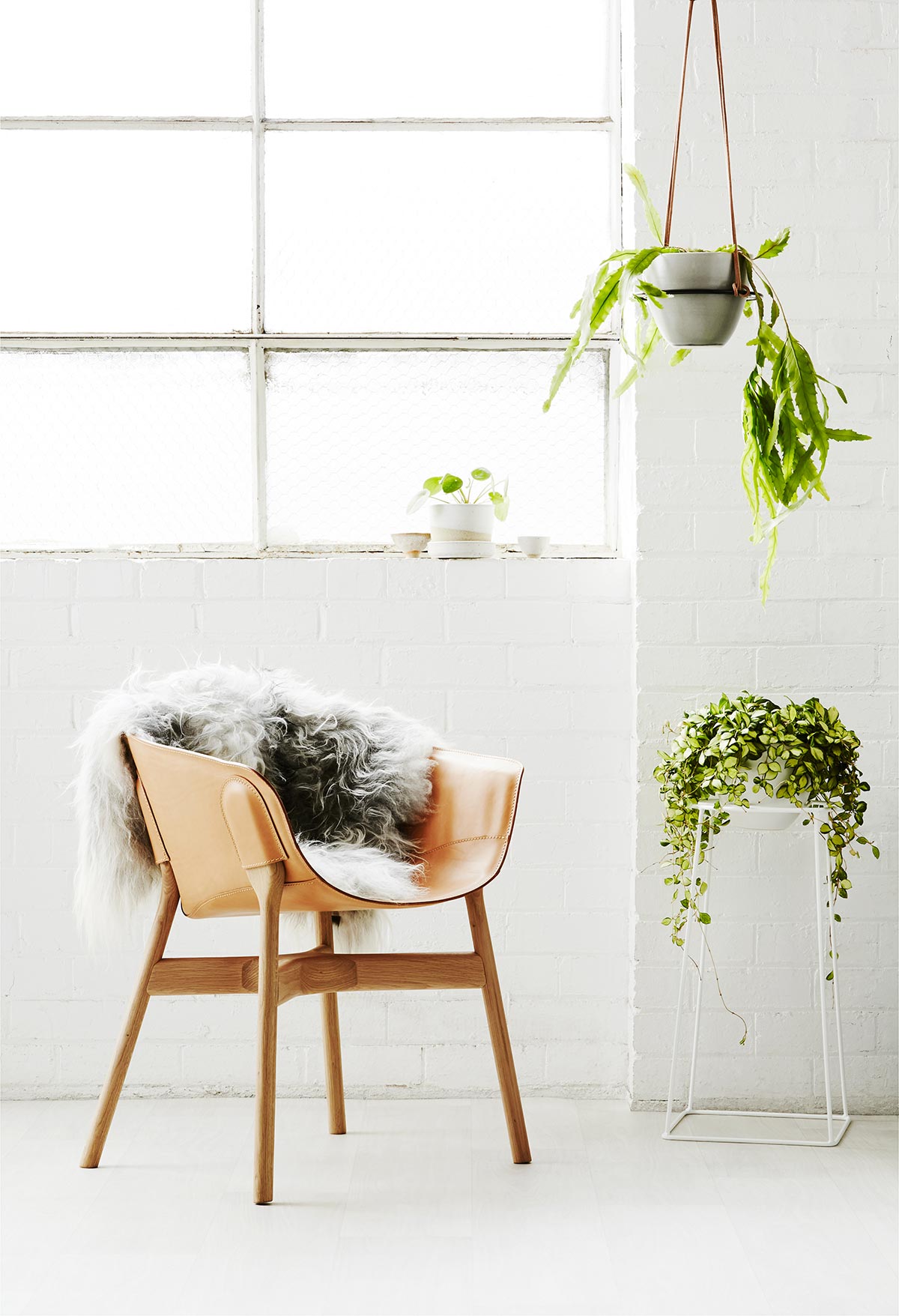
Photography by Annette O’Brien
Styling by Alana Langan for IVY MUSE



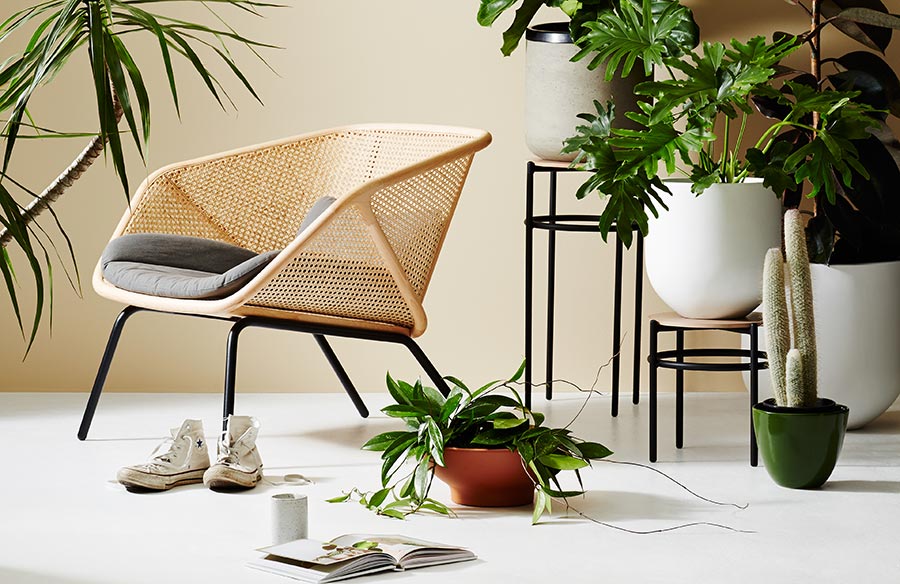



Hi, can you please advise where the white hanging planter above point 5. Is from?